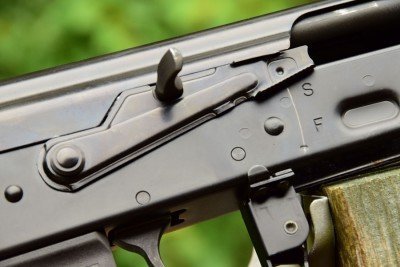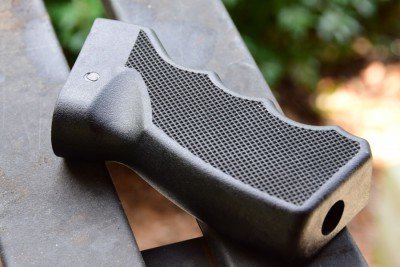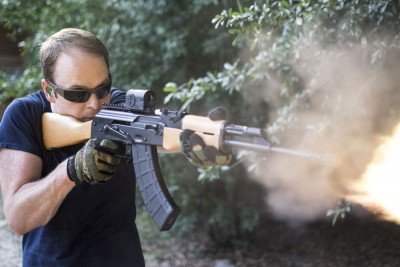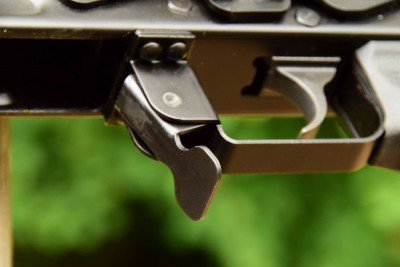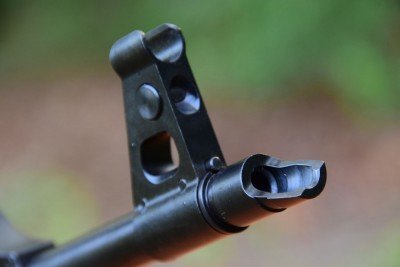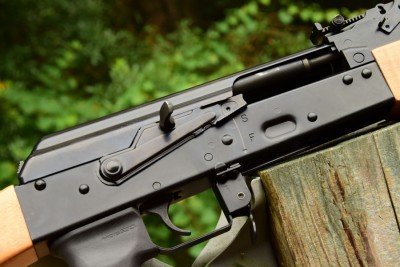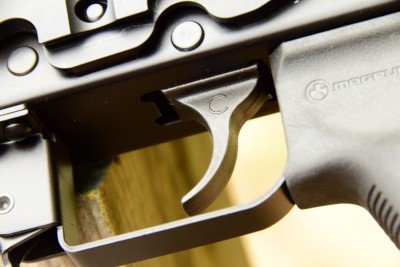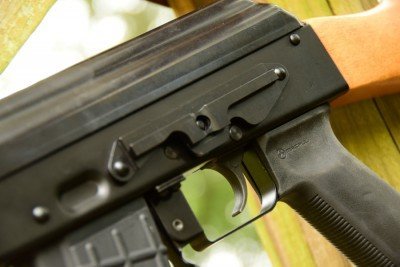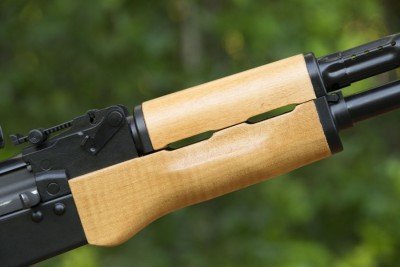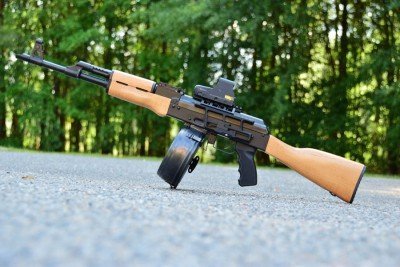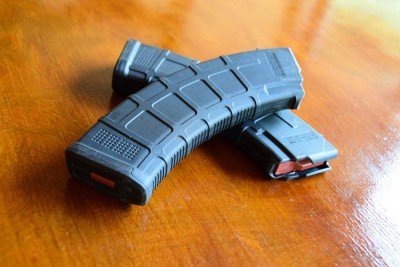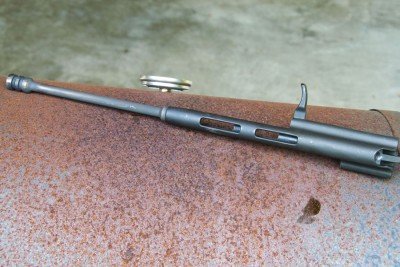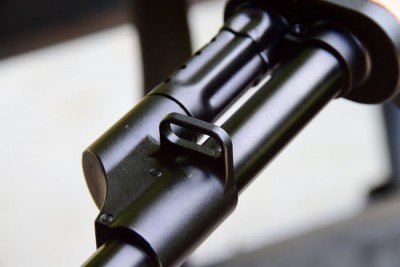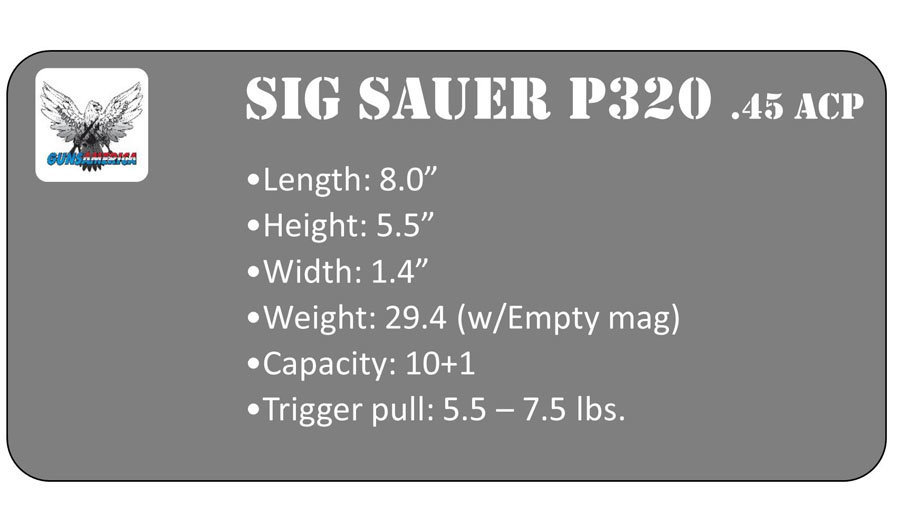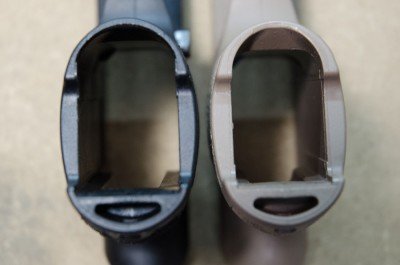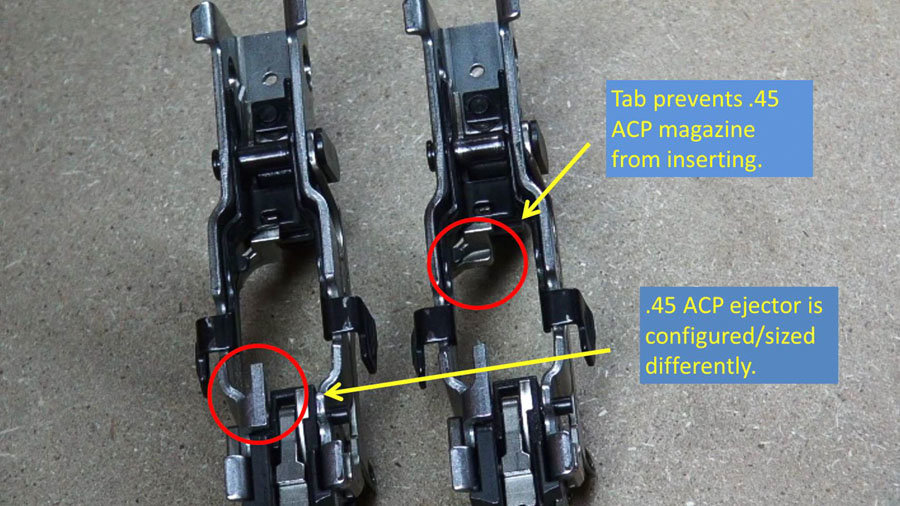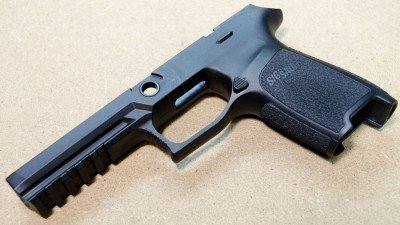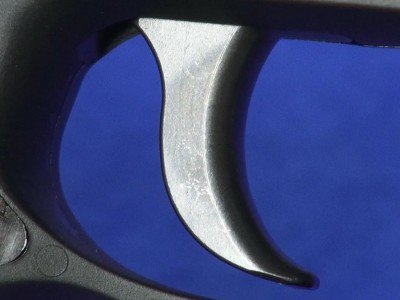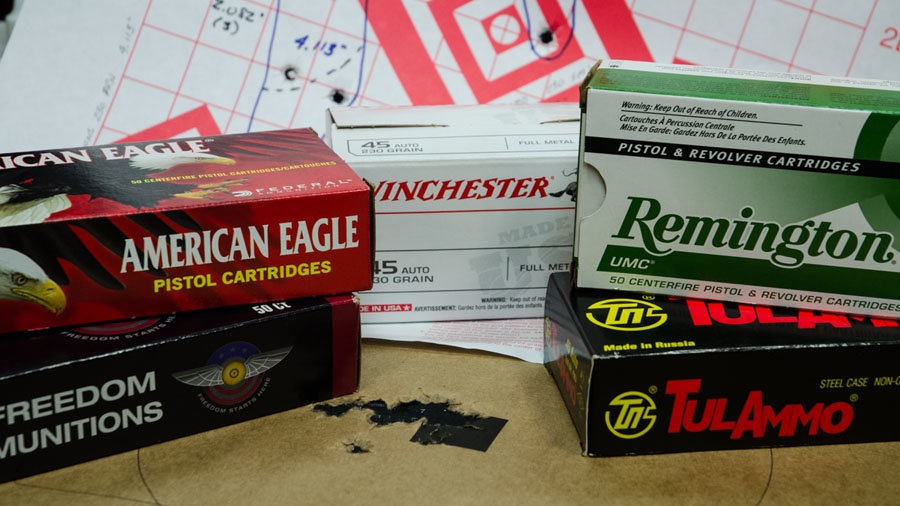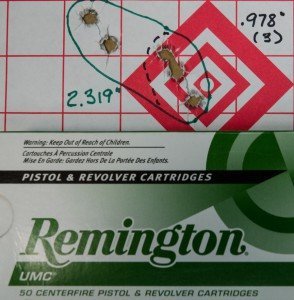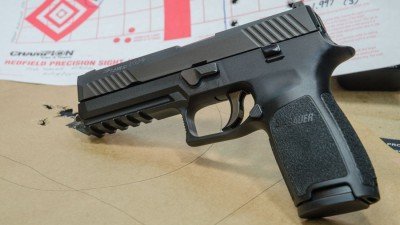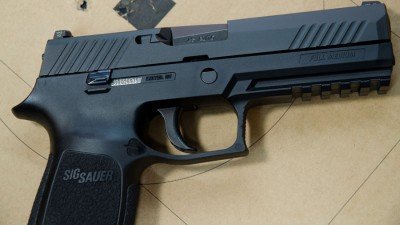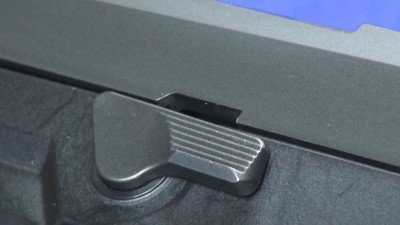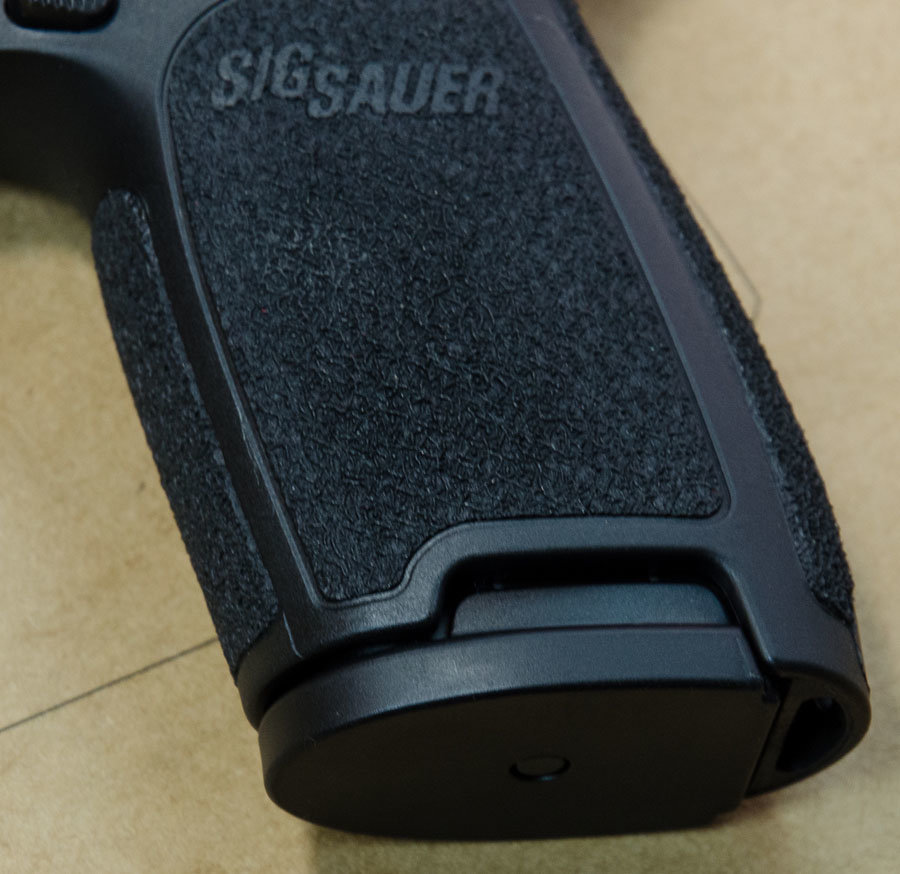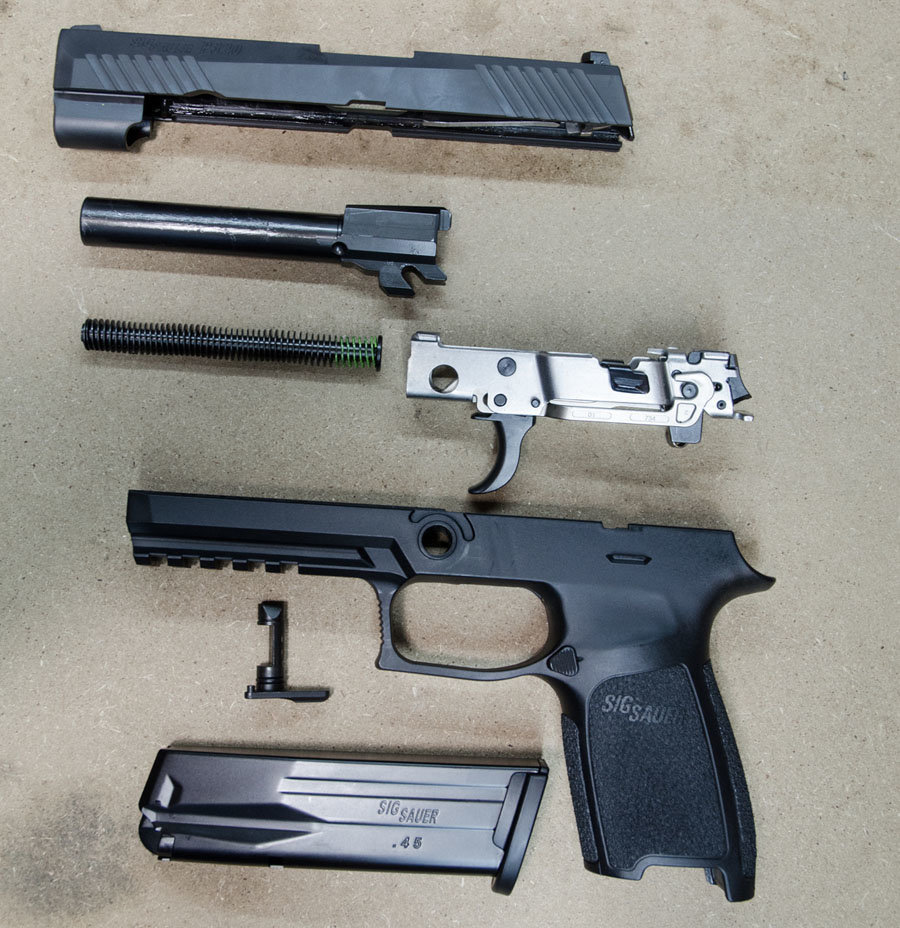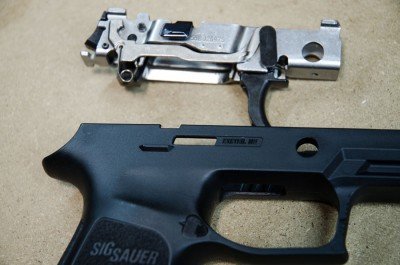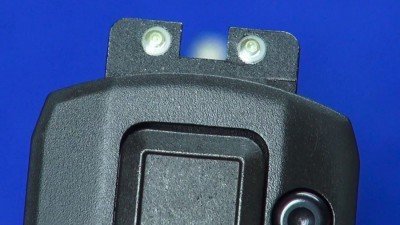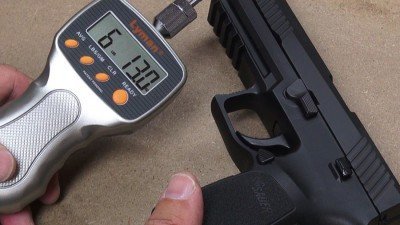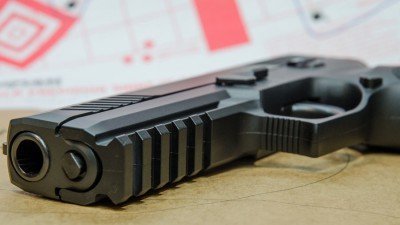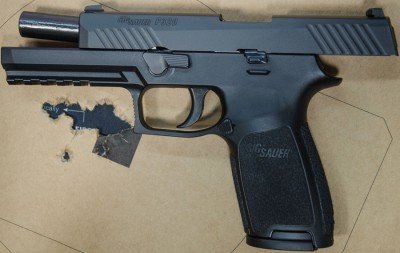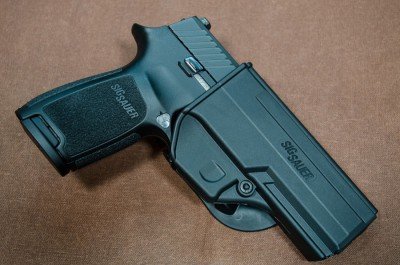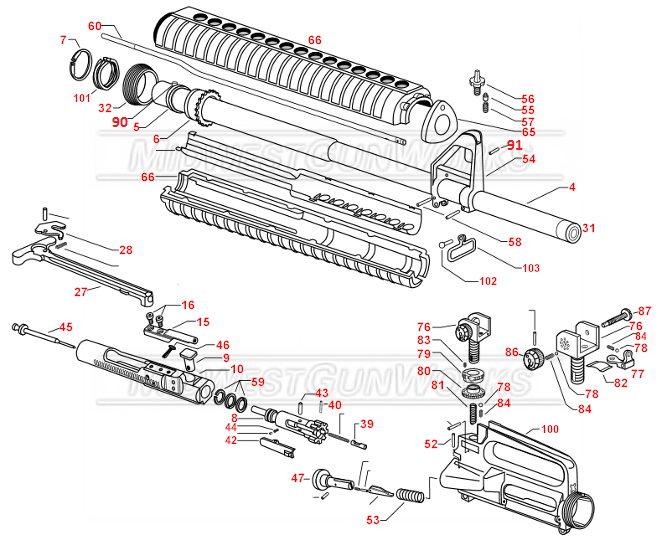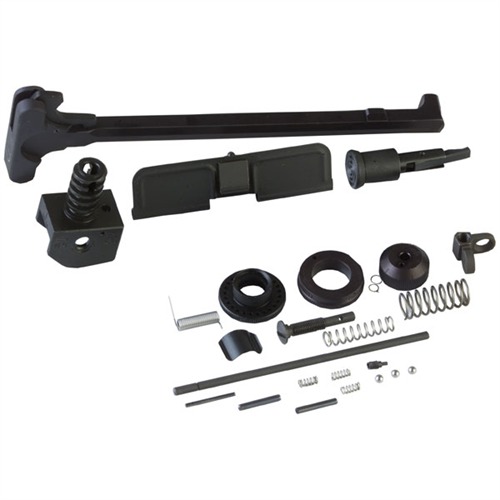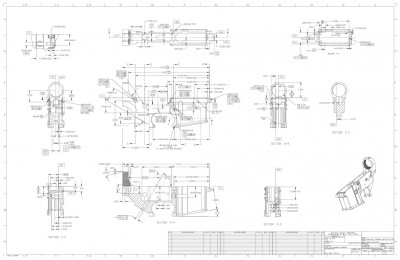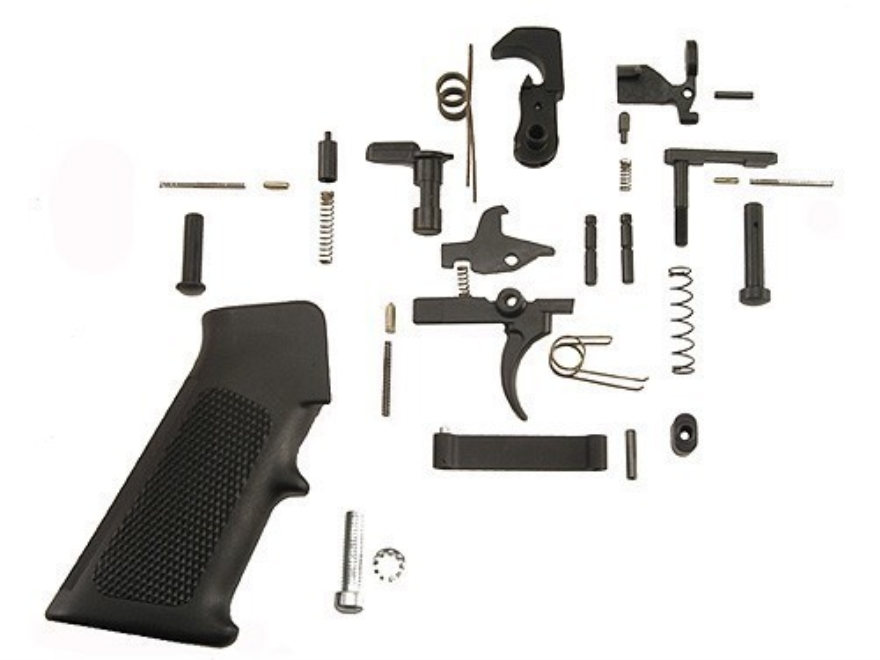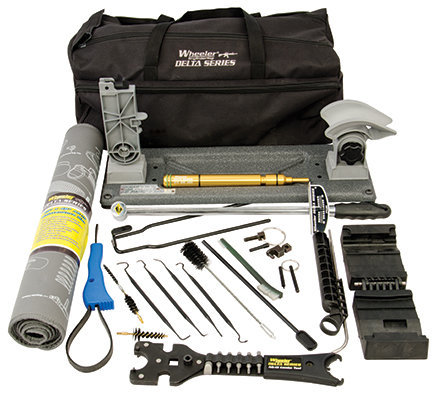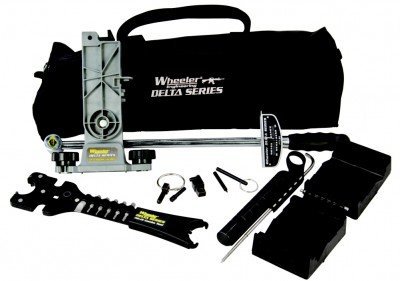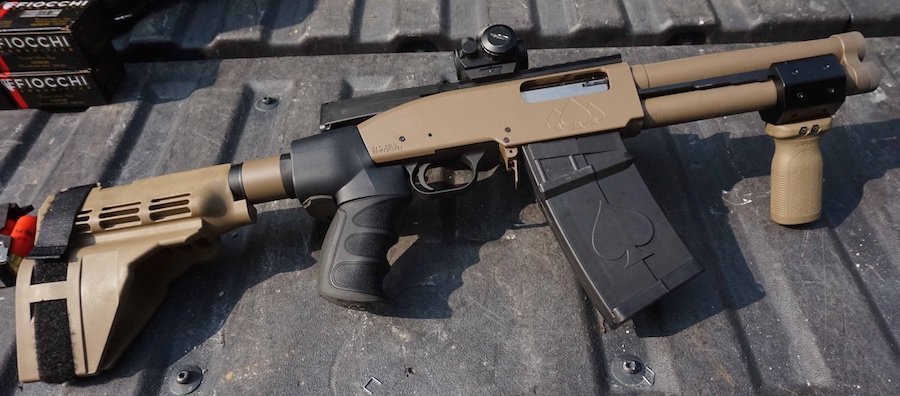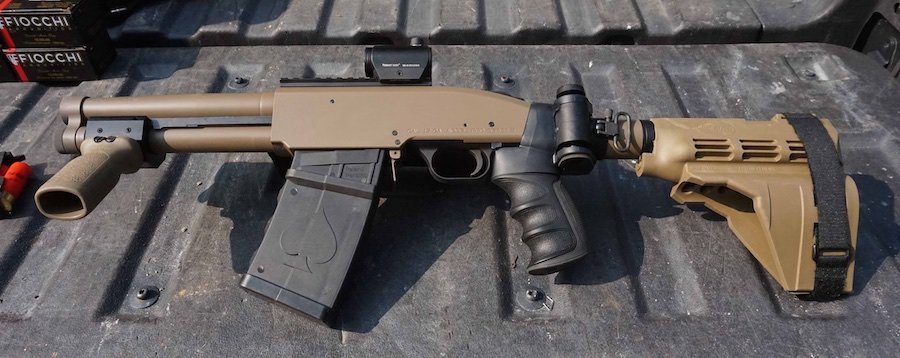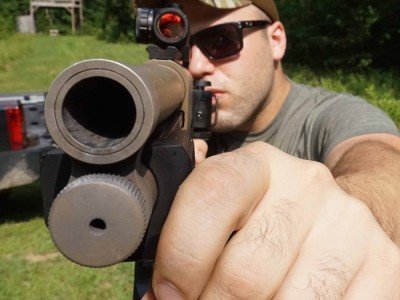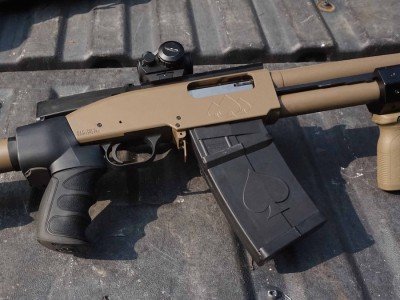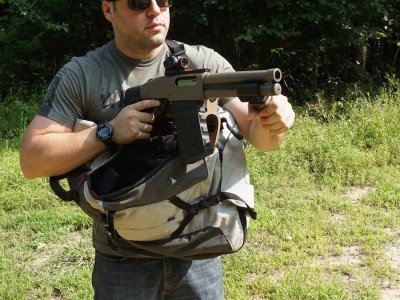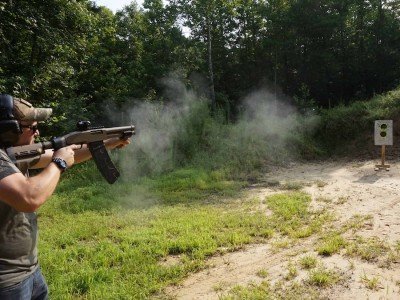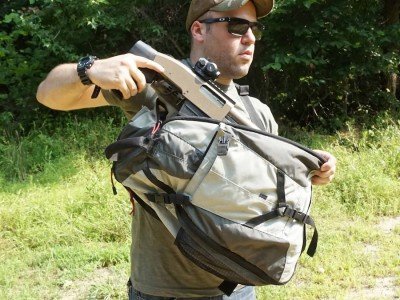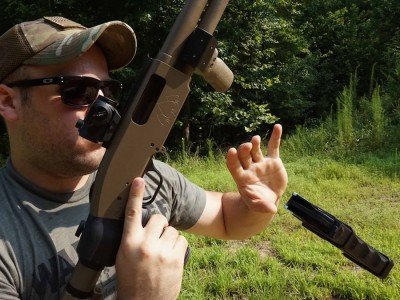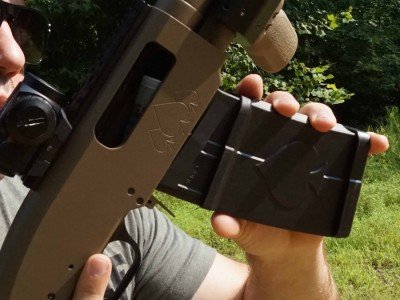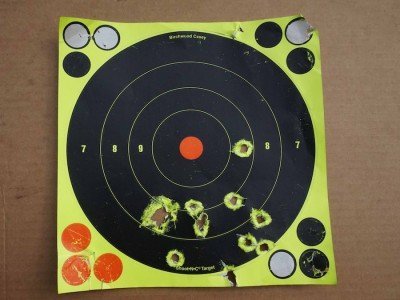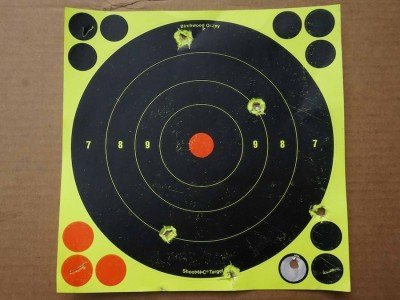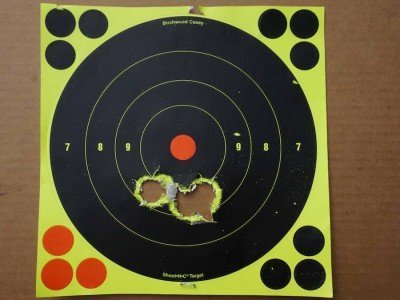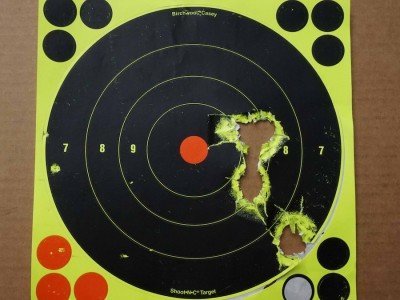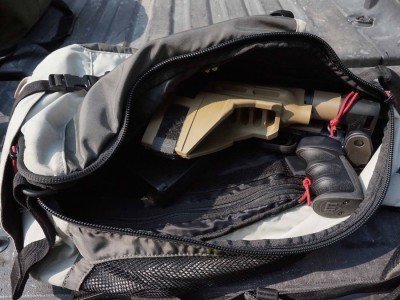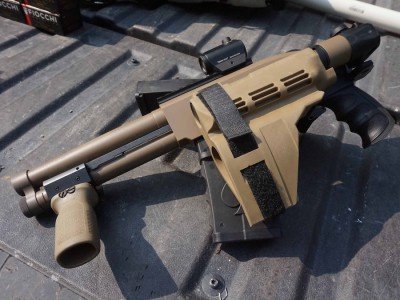Visit the Century site: http://www.centuryarms.com/
Made in America
Recently, American consumers have been clamoring for American-made goods. From baby toys to dog food, few things have escaped the ire of these patriotic purchasers. Once exception is Mikhail Kalashnikov’s namesake, the AK-47. For years AK elitists have considered anything not made behind the Iron Curtain to be cut rate; and in many cases they’re correct. However, Century Arms, the largest importer of AKM carbines, has decided in light of recent importation sanctions to shatter the myth with their own all-American AKM, the RAS-47. How does it stack up against decades of AK-manufacturing experience of overseas builders? Better than anyone could have guessed.Though it begs the question why. Why would Century undergo the tremendous cost, time and effort to produce a 100 percent American-made AK when countless countries fielded hundreds of millions of the rifles that can be parts kitted out, saving them millions of dollar?
In a word, sanctions. In two: import restrictions.
In response to the aggressive military actions of Russian prime minister Vladimir Putin, President Obama issued punitive economic sanctions against them. One of these actions was the restriction on imports of Russian-made firearms into the United States. While some manufacturers were spared, the largest Russian manufacturer of AK rifles, Izhmash, was not. This lead to increased fear that all AK rifles would face importation restrictions VIA executive order. This, combined with the huge time delay on imported firearms stuck in US Customs and so-called sporting clause limitations caused by section 922r, created an unstable AK resource market.
Rather than be subject the whims of a notoriously anti-firearms president or the trepedacious nature of hawkish Eastern European oligarchies and their country’s seemingly nebulous borders, Century decided to create their own parts source market.
RED ARMY STANDARD (RAS) 47 Semi-Auto Rifle
- Caliber: 7.62x39mm
- Capacity: 30 rds.
- Receiver: Stamped
- Barrel: 16.5″ with a 1:10 twist, 14×1 LH
- Overall: 37.25″
- Weight: 7.8 lbs
A note on Century
Before we continue, it’s important to address the concerns of gun forum-goers everywhere. Yes, Century Arms made some mistakes in the past with their builds. Given the volume of their products, this is unavoidable. Also, given the company’s prolific nature, the reports of these issues are often overstated. How many times do shooters buy a gun from any maker, and excitedly post online that it runs as advertised?Additionally, the majority of issues with Century’s most problematic rifle, the Romanian WASR, had nothing to do with Century’s mechanical or manufacturing capabilities. Since the most prominent issue were canted iron sights and these are a result of poor build quality by the Romanian armory where they were made. In that case, the alterations Century made had nothing to do with the front sight. Still, there’s no denying that Century should have caught these issues with their quality assurance team.
Previously Century was known as the economical (read: cheap) way to get into the AK game. Their new approach centers on building the best, without having a cost-prohibitive price point. Though their approach is sure to aggravate purists and collectors alike.
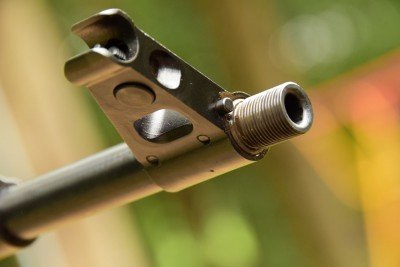
The
iron sights on most all AKs are basic, at best. While the RAS-47 is no
different, the sights are appropriately durable. And the barrel is
threaded, too. Bonus.
The new Century?
Instead of simply checking off every box on an AKM build checklist for what it takes to make a mil-spec AK, the new RAS-47 seeks to surpass it. While many of said improvements are obvious upgrades, some of the areas where Century made alterations offer questionable benefits. Such as the lightening cuts made to the bolt carrier to reduce lockup time and the omissions on the bayonet lug. Neither of these bother the overwhelming majority of prospective buyers, but the remaining five percent malcontents are disproportionately vocal. Other deviations include the lower handguard interface which is made to Russian standards, so Romanian-type furniture will require minor fitting, and the addition of their own proprietary polymer, finger-grooved pistol grip. The latter of which is precisely what Century ships on their N-PAP series of rifles – though more traditional replacements can be purchased online for as little as $10.Which is great, because personally, I detest grooved pistol grips. This is because these grips are meant for someone who perfectly fits them. Nine times out of ten, I’m not that guy. While less of an issue with Hogue rubber grips that have some give, these hard plastic grips are pretty uncomfortable especially when holding the rifle with one hand during tactical reloads. That said, many of my larger-handed compadres found the Century grip to be much more comfortable than factory ones. The best solution would be to try and handle one yourself before buying, but again it’s only a $10 fix if a shooter determines they aren’t correct for them. Though this isn’t the only furniture option available on the carbine.
Shooters have their pick of the more traditional wood-stocked version or the tactical Magpul one. The Magpul version features the wildly popular new series of polymer AK furniture announced just prior to SHOT Show 2015. The handguard of which features Magpul’s proprietary accessory-mounting system known as M-Lok. This is great news for both tactical gear-lovers and pragmatists alike since most other mounting options add considerable weight forward of the magazine well. Anyone who has ever carried an AK or fired one extensively can attest that the gun is sufficiently weighty as it comes, and the added forward weight shifts the balance towards the muzzle, making the carbine feel sluggish and needless heavy.
Shooting the RAS-47
All
groups in the data below were fired from the prone position and are
5-round groups achieved at 100 yards. Each shot was taken approx 10
seconds apart to allow proper barrel cooling. Loads were measured 10
feet from muzzle with RCBS AmmoMaster Chronograph and are the rounded
average of 3 five-shot groups.
Though it’s what’s beneath this handguards that really sets the
Century RAS-47 apart from competitors. Whereas military specification AK
carbines feature a chrome-lined steel barrel to better resist
corrosion, Century’s new carbine uses a stainless barrel coated in black
nitride. The result is a remarkably accurate rifle that defies the AK’s
reputation as a crudely-made, inaccurate leadslinger. In testing, the
RAS-47 proved more accurate than many off-the-shelves AR-15 carbines;
achieving five-round groups just over one MOA at 100 yards with Hornady
SST ammunition–a feat I deemed impossible for the platform prior to
shooting this rifle.- Red Army Copper-jacketed 123gr FMJ–1.74″ – 2411 FPS
- Hornady 123gr SST–1.12″ – 2306 FPS
- Prvi Partisan 123gr FMJ–1.91″ – 2403 FPS
- Silverbear 125gr SP–2.24″ – 2367 FPS
- Tulammo 123gr FMJ–1.44″ – 2321 FPS
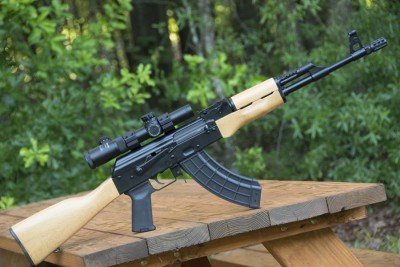
A
decent mount will allow you to use precision optics to their full
potential. This is a Hi-Lux 1-4x24mm CMR-AK762 mounted in a Midwest
Industries 30MM AK Side Mount (barely shown).
Both offer great mounts that were utilized in this review, and drastically increased the carbine’s usability, while assisting it in reaching its potential. This is especially true when paired with a high-quality magnified optic; shooters can’t hit what they can’t see.
Below this mount is another non-traditional addition to the AKM, an extended magazine release – Though referring to it as such is misleading. The release isn’t simply extended, but also widened so shooters can more easily release empty magazines. In testing, this upgrade offered little time savings to more experienced AK-runners, but newer shooters appreciated the wider controls. In my experience they are greatly helpful for shooters using alternative reloading techniques, such as dislodging the spent magazine with the middle finger of the firing hand, without leaving the pistol grip. Not simply because it’s easier to reach, but also because the extended portion offers greater mechanical advantage, thus reducing the amount of force required to do so. Again, mostly unimportant for traditional shooters, but those running an AK under the clock will appreciate the precious milliseconds saved.
Even though the RAS-47 has a myriad of atypical features for an AK, it still retains many iconoclastic details that function well and maintain the traditional AK aesthetic. For instance, unlike Century’s first attempt at an domestic AK clone, the C39, the RAS-47 uses a standard AKM post and notch iron sights. The rear leaf sight is adjustable for drop and has pre-measured distances notched out for rapid target engagement.
Another classic feature is the slant muzzle brake topping the RAS-47’s barrel. It features AKM-standard 14X1mm LH threading, so shooters can purchase alternatives designed to fit any AKM carbine that doesn’t use the larger mount on AK-74 or AK-100 series rifles. Although this addition is aesthetically pleasing and functional, I feel Century would have been better served introducing their own brake, but only if it wouldn’t have affected the rifle’s price point.
Prices range from $669.99 to $859.99 depending on furniture. This model regularly sells for less than $600. Given the high price of the optional Magpul furniture, shooters are getting what they pay for in both instances. So whether a shooter is looking for their first AK rifle, a remarkable accurate carbine in an inexpensive caliber or simply an attractive, ultra-reliable plinker – the Century Arms RAS-47 won’t disappoint.
Ammunition for for this review provided by Hornady Manufacturing and Century Arms.
